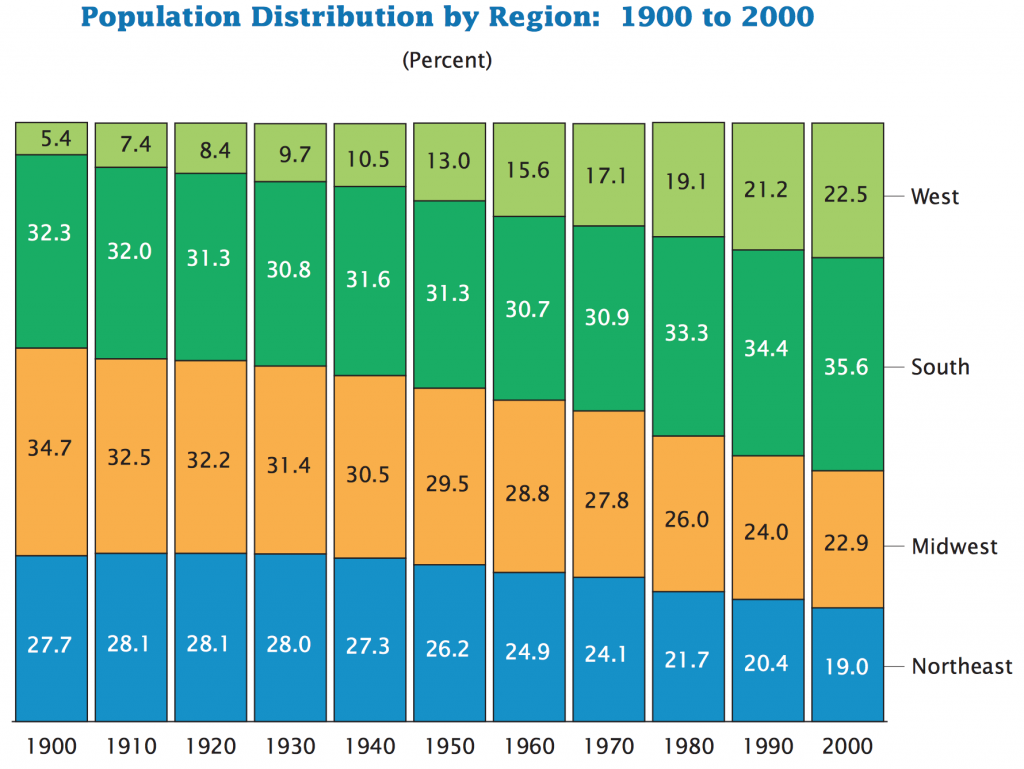
If we left our climate in charge, we could only seek out a merciful breeze and a shady tree to keep us comfortable in the hottest stretches of southern living. Can you imagine a day without air conditioning? We take A/C for granted as a necessary convenience, but it’s a relatively new development in human history. Early efforts in the 1800s didn’t hit the mainstream until the early 1900s. Willis Carrier (yes, that Carrier) invented the modern air conditioning system in 1902. The 1930s saw the first window and car systems. And we’ve craved cooled air ever since.
A/C Attracted Americans to Warmer Clients
There’s no doubt that the warmer climates in the U.S.—and even the migration patterns of the whole country—have been greatly impacted by air conditioning. Once air conditioning and indoor climate control became not only possible but commonplace, hot cities that were often avoided suddenly became much more appealing. Who cares if it’s 100º outside, when inside air can be a perfect 72º? Plus, A/C empowered residents to survive steamy summers in order to enjoy rather comfortable winters. It’s not clear whether workers followed industry or industry followed workers to these Sun Belt regions, but even today population continues to grow faster in the South and the West than in the rest of the United States.

A Cool Worker Is a Productive Worker
Rather than the drop-off in productivity seen in nations that lack air conditioning to temper their heatwaves, it’s business as usual for Americans even in the hottest parts of the South and the West—all because of the comfort of the cooled indoors. Of course, if you work outside in the heat (perhaps installing things like air conditioners), the weather has more influence over your workday. But it’s possible to take a break and recharge in the cooled air, and your ability to work at your peak significantly improves.
Better Systems Promise a Better Future
Two of the biggest concerns with air conditioning have been environmentally-friendly coolants and energy consumption.
CFCs Are So Uncool
In the 1990s, the primary refrigerant (cooling material) in air conditioning—Freon, a CFC (chlorofluorocarbon)—was found to deplete the ozone, a part of the earth’s atmosphere that helps protect us from dangerous UV radiation. Since then, new environmentally-safe refrigerants have been developed, including non-CFC versions of Freon. CFCs were largely phased out 5 years ago, and HCFCs (hydrochlorofluorocarbons) should be phased out within the next 5 years. Keeping cool while keeping the planet safe is an achievable priority.
Energy Efficiency Is Money in the Bank
Your air conditioner is part of a much larger system that is influenced by your weather and the construction of your home (or business). A well-insulated energy-efficient home will enable your energy-efficient and well-maintained A/C system to run often enough to keep you comfortable without emptying out your wallet. Technology (motivated at least in part by increasing DOE standards) has made all these improvements possible so that warm weather’s demand on air conditioning is much less than even a decade ago.
Warm climates are appealing to nearly everyone—if not to live, then at least to vacation. With the amazing development and ongoing improvement of air conditioning, the U.S. Sun Belt is sure to keep attracting people who love to be warm… and stay cool!







